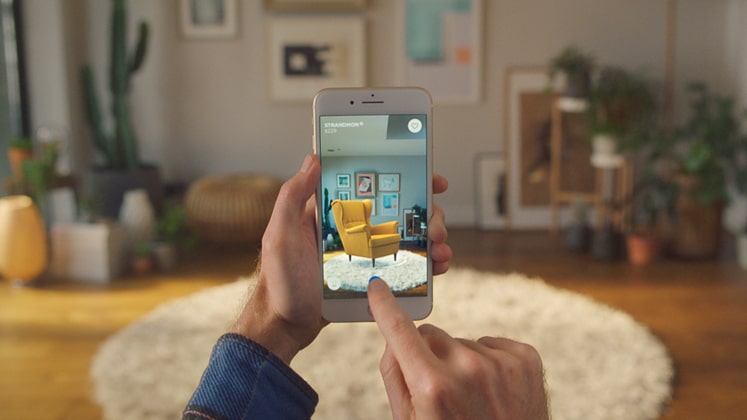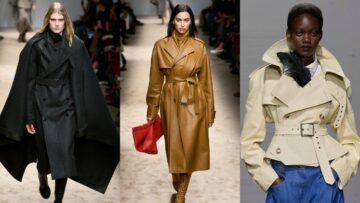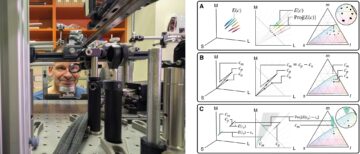The world of technology is constantly evolving and more recently so, with the emergence of the metaverse and Web3. That being said, one of the most intriguing and widely discussed technologies in this space is undoubtedly artificial intelligence (AI), which has sparked debates about whether its output can be considered art or design, and has introduced a new, somewhat mysterious formula for creating in the digital era.
What exactly is AI?
AI refers to the ability of machines or computer programs to perform tasks that would normally require human intelligence to accomplish. This can include a wide range of capabilities, such as recognising speech, processing natural language, understanding visual information and making decisions based on data.
Artificial intelligence systems are usually driven by sophisticated algorithms and machine learning methods that enable them to learn from data and feedback from their environment, thus enhancing their performance over time. AI has a wide range of applications in areas such as automation, healthcare, finance and transportation, among others.
AI in art and design
When it comes to art and design, AI has been utilised to generate a continuous flow of content, but the process of creating AI-generated imagery requires a significant amount of experimentation.
Upon accessing an AI platform, the majority of instances involve the user being asked to provide a prompt, which can be as general or specific as they choose. As the AI system learns and comprehends the task assigned to it, the generated images become increasingly closer to the intended output. Even a slight alteration of the prompt can drastically transform the resulting imagery, and the more exploration is done, the more intricate the final product can become.
It has now become common knowledge that the likes of music, art, fashion design and other creative fields have become subject to AI tech, in a sector that is rapidly evolving in line with accelerating interests. Experts in the field are now investigating the possibility of AI systems exhibiting creativity without human input, in an effort to gain insight into the nature of communication between machines and humans.
The debate
The conversation around AI started gaining significant momentum towards the end of 2022, largely due to the emergence of platforms such as ChatGPT, Lensa AI and Midjourney. This sparked a discussion around the use of AI in the creative process, with some people contending that the technology could be viewed as a form of replication, leading to ethical concerns such as encouraging mass production. In contrast, others consider AI to be a fresh avenue for artistic expression, offering designers and artists accessible tools to enhance their work.
More recently, a similar discussion came to the fore in the NFT space, after artist Mason Rothschild was taken to court by Hermès with the luxury brand accusing him of stealing its designs to create digital assets that had made him over US $ one million in sales.
Ultimately, a jury ruled in favour of the French luxury brand, determining that Rothschild had indeed profited off its name.
As per industry experts, the recent ruling has established a precedent for how comparable disputes involving fashion and technology may be resolved in the future, drawing comparisons to the ongoing conversation surrounding AI. However, as AI technology continues to advance, the question that arises is whether it will potentially have a positive impact on the fashion industry going forward or not.
A collaborative approach
AI technology has opened up a new realm of creative opportunities, particularly for those seeking alternative pathways to enter the industry. There is now a broad range of online tools available, both free and paid, which enables almost anyone to utilise this technology. This has resulted in a surge of interest from a new generation of artists and designers who are revolutionising the meaning of creativity in today’s society.
From using AI-generated colour palettes to producing complex digital sculptures, artists are embracing the power of AI to revolutionise the way they create. AI allows one to experiment with new techniques, explore unconventional materials and push the boundaries of what we traditionally consider as art.
Last year, IKEA introduced IKEA Kreativ, an AI-powered design platform that offers customers in the United States a new way to visualise and design their living spaces. The platform utilises digitised furniture and augmented reality technology to provide customers with a realistic and accurate representation of how the furniture would look in their homes. With IKEA Kreativ, customers can design and experiment with different furniture layouts, colours and styles, all from the convenience of their smartphones.
This innovative platform bridges the gap between the online and in-store shopping experiences and represents a significant step forward in the use of AI technology in the world of interior design.
In another case, Japanese fashion designer Yuima Nakazato is leading the way in AI-infused fashion and has showcased his bio-couture collection at Haute Couture Fashion Week in Paris. Nakazato utilises 3D technology and personalised machines to create unique and customised garments for his clients.
He does this by first taking the measurements of the client using a 3D scanner, before transferring the data to a machine which directly cuts the different parts of the fabric to assemble the full garment. In this way, no material is wasted, and the customer receives exactly what they desire in the perfect size. This approach reduces waste and helps to address sustainability issues within the fashion industry.
Another example of the collaboration of fashion and AI is the Algorithmic Couture project by Synflux. The team uses machine learning to generate optimised fashion patterns that are zero-waste and comfortable, pushing for more sustainable and efficient production methods.
Turiya Kapoor, who leads Business Strategy and Finance at The ODD Factory, a high-quality clothing manufacturer and supplier in Mumbai, India, told Apparel Resources that they have launched a new service that entails developing fashion mood boards for brands and print files – “This is a very cool AI model that we have initiated wherein the client needs to provide certain details on concept, colours, demographics, print references, etc., for their collection post which a form is sent to them to fill. Based on the details provided, we then develop print-ready files for them along with a fashion mood board which contains 2D mock ups of styles in their AI generated prints, futuristic trends, patterns, colours, etc.”
Artists and fashion designers such as Field Skjellerup (@ai_clothingdaily) are also changing the game by employing AI to generate intricate textile designs that can be used to produce one-of-a-kind garments. In fact, he has gained a massive following due to his hyper-realistic AI designs that blur the line between reality and digital creation with his work sparking interest among followers who often inquire about how to purchase the pieces he creates, which range from AI versions of Nike shoes complete with heavy embellishments and intricate embroidery, to full runway outfits donned by similarly artificial models.
Namrata Joshipura, who returned to the runway this season with LFW in partnership with FDCI after a long hiatus, said, “Our latest collection is an exploration of how the fast pace of technology, in particular AI, is going to shape our future, a feeling of nostalgia will help us to anchor to our essential humanity. Of course, we will be re-visiting our signature elements such as shine, high glam, body con and occasion dressing as well.”
Enhancing customer experience
AI has become a valuable tool not just for clothing design, but for retailers as well. Many companies are implementing AI in their e-commerce and online marketing strategies to improve customer experience and potentially achieve more sustainable production processes. This technology is particularly useful in the ongoing evolution of e-commerce, with applications such as providing more accurate product recommendations on retailers’ websites and collecting data to make search and discovery more efficient.
One company that is helping retailers to enhance their customers’ experiences through the use of AI technology is tech firm Perfect Corp. that offers AI-powered try-on experiences for e-commerce, enabling consumers to try on products virtually from the comfort of their own homes. The technology offers a fast analysis and provides customised product recommendations, efficiently matching products with consumer needs and increasing the confidence of their purchase.
AI-powered solutions in fashion can offer personalised shopping experiences, which can lead to increased customer satisfaction and decreased product returns. In addition, these technologies can help brands achieve their environmental, social and governance (ESG) goals by reducing waste and emissions generated from the product sampling and return processes. By utilising AI in this way, fashion brands can not only enhance their customer experience but also work towards more sustainable and responsible business practices.
In today’s fast-paced retail industry, it’s essential for brands to keep up with the latest technological advancements to remain relevant and engaging to customers. With the rise of AI-powered solutions, brands can now transform their consumer journeys, improving sales, engagement and customer loyalty.
| Vorkirtual try-on technology solves a major pain point in the fashion industry, taking the guessw out of shopping while providing each customer with a personalised experience. |
This shift in consumer shopping habits towards personalised, digital experiences is only set to increase and AI will play a crucial role in enabling consumers to shop in a more interactive and customised way. As such, implementing AI technologies is not only crucial for reaching ESG goals and decreasing waste and emissions but also for providing shoppers with the personalised experiences they are increasingly looking for.
The debate around AI-generated art is far from over, but one thing is clear: this technology is here to stay. So whether you’re a traditionalist or a tech enthusiast, there’s no denying the potential of AI to revolutionise the art world.











